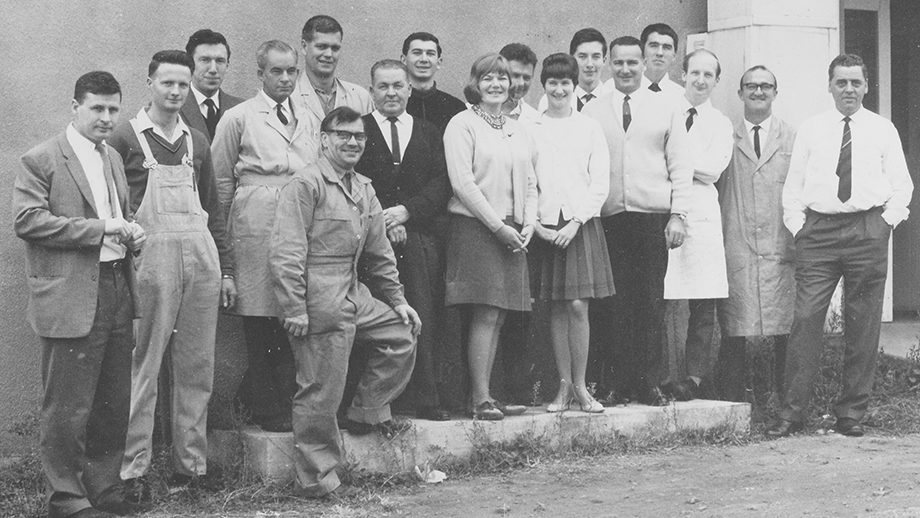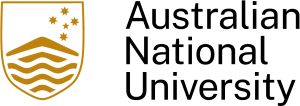RSC Feature: Roger Smith

Before the Research School of Chemistry opened in 1967 Australia did not have a chemical research institute that matched the quality of international institutions.
Students of chemistry traditionally travelled to the United Kingdom or USA to study for their PhD and for postdoctoral appointments. It was this challenge that drove the building of the RSC.
It is appropriate therefore that the first ever PhD student at RSC did the opposite, traveling from the UK to Australia to complete his research. Roger M. Smith arrived in Australia in December 1966, a young and energetic researcher ready to start his research career at one of the newest research institutes in the world.
Roger actually began his PhD in Manchester eleven months before his arrival in Australia. As he explains:
“I did my first degree at Manchester University and then I started an MSc (Master of Science) in organic chemistry with Rod Rickards as a prelude to continuing to a PhD. About the end of my first year in mid-1965 I learnt that Rod would be moving to Canberra as a Senior Fellow in the newly created Research School of Chemistry and he asked would I like to join him. This was an exciting opportunity and I rapidly accepted.”
For Roger this was, as he described it “an adventure”, which began the moment he agreed to move. He started his research studentship in February 1966 in Manchester as the RSC building was still being built in Canberra. Later that year he was the first student to set off for Canberra, and was shortly joined by other students and researchers in the organic chemistry group being created by Professor Arthur J Birch.
“I left for Australia in November 1966,” Roger says. “The only way I could go within the travel allowance at that time was to go by boat on the SS Australis. We went via the Suez Canal, then Aden, to Fremantle, Melbourne, and Sydney and then I went up to Canberra. I got there just before Christmas in 1966. I had a very quick look before the Christmas break and I think the only thing I managed to do was join the Christmas party.”
The school was very different to what it became. “The RSC was a bare field, nothing around it, basically a construction site and still missing the library block” he explains. “I started doing research in a hut by the cricket pitch. We had a lab set up there surrounded by boxes and crates of chemicals, glassware, and equipment ready for the new building. We were only eventually able to move into the nearly completed building in August 1967.”
His research was on the chemistry of macrolide antibiotics and was focused on identifying the structures and stereochemistry of a number of related compounds, including borrelidin, picromycin, methymycin, and lagosin. In doing so he learnt a range of new techniques, including instrumental analysis using gas chromatography, which at the time was considered a new technology, despite the often laborious process based largely on degradation reactions compared to modern spectroscopic techniques, demonstrably shown when another group published the full structure of borrelidin before Roger was able to finalise his identification.
Roger completed his PhD with the viva in July 1968 and managed to publish a number of papers from his ANU research. The chemical and instrumental experience he gained during his PhD at ANU were invaluable for a successful global academic career, initially as a natural product chemist, moving to Madison and Virginia in the United States and then back to Brighton in the UK before returning to the southern hemisphere at the University of South Pacific in Fiji. Finally he accepted a position as an analytical chemist at Loughborough University, retiring more than 30 years later as an Analytical Chemistry Professor in 2009.
Yet in many ways it was the community at ANU and RSC that Roger cherishes the most. As he says:
“I was staying at University House, which at that time was the postgraduate hall of residence. I met a lot of other students who were working in a range of different subjects from astronomy to economics and we went off and did things as a group, like going down to the beach at Batemans Bay, or for a picnic up in the hills, or to Casuarina Sands, or even skiing at Smiggins Hole. It was a very collegiate, friendly atmosphere”.
It is for this reason that Roger has returned to Canberra many times since he completed his PhD, and intends to return for the school’s 50th anniversary celebrations in 2017. As the school’s first PhD student, RSC will always be a significant part of his life, as he will always be a significant part of the school.

